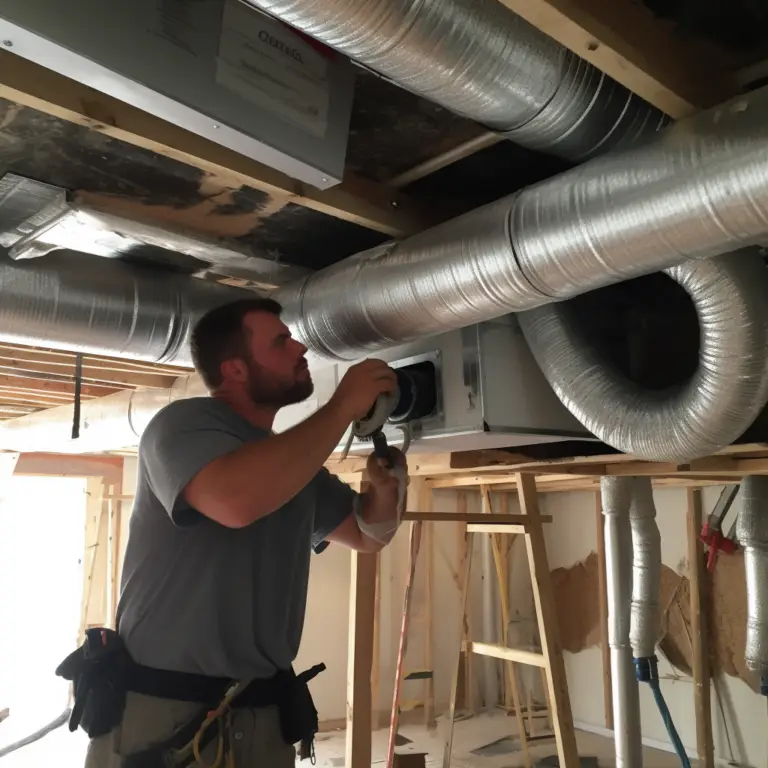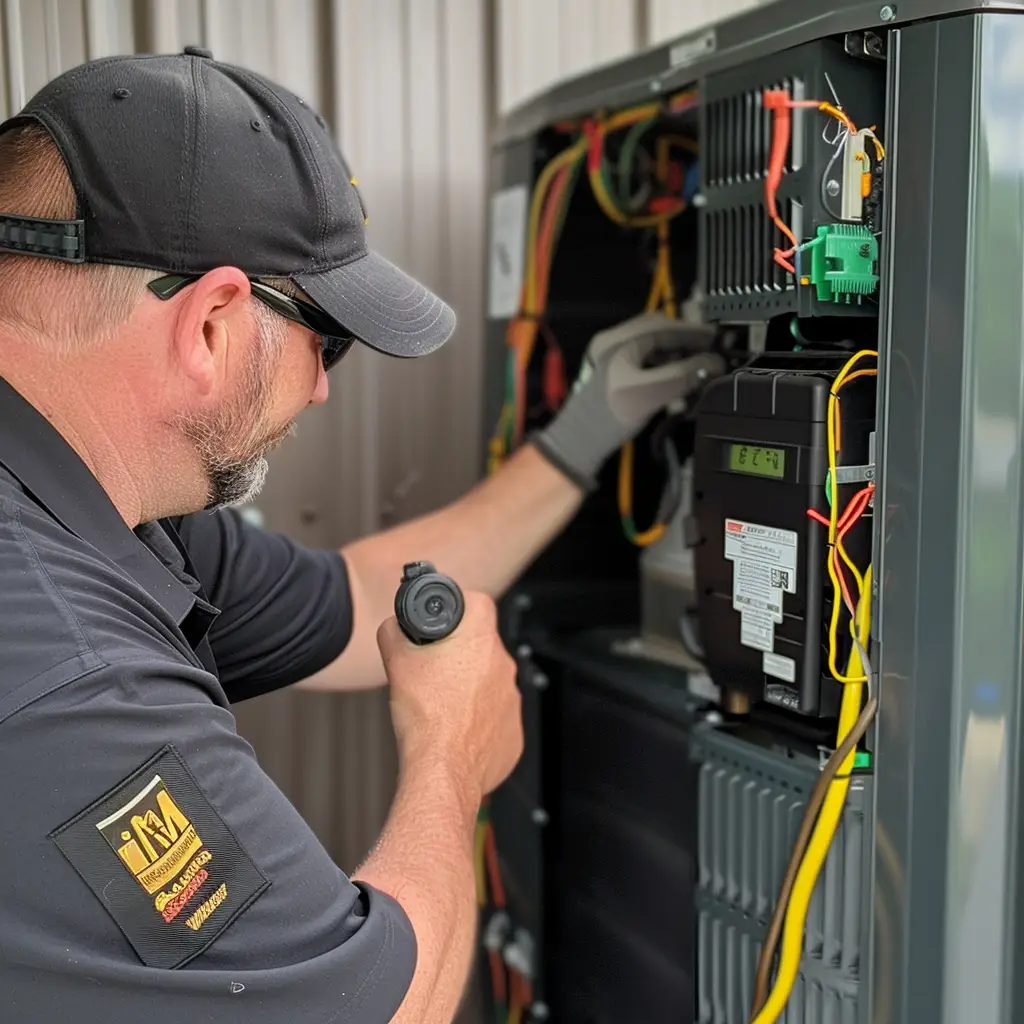Introduction to HVAC Ductwork
HVAC ductwork plays a vital role in the overall performance and efficiency of your heating, ventilation, and air conditioning (HVAC) system. Properly designed and installed ductwork ensures that your home remains comfortable, with consistent temperatures and good indoor air quality. In this guide, we’ll dive deep into the world of HVAC ductwork, helping you understand its importance, various types, and how to maintain it for optimal performance.
Importance of Proper Ductwork
Properly designed and installed ductwork is crucial for several reasons:
- Efficiency: Well-designed ductwork minimizes energy loss, which translates into lower energy bills and a smaller carbon footprint.
- Comfort: Balanced airflow throughout your home ensures consistent temperatures and prevents hot or cold spots.
- Air quality: Proper ductwork reduces the risk of air contaminants and pollutants entering your living spaces, improving indoor air quality.
Understanding Cubic Feet per Minute (CFM)
Cubic feet per minute (CFM) is a critical metric used to measure the airflow in your HVAC system. It represents the volume of air that passes through a specific point in one minute. Knowing the CFM requirements of your home and HVAC system is essential to determine the proper ductwork size and design.
Calculating CFM
To calculate CFM, you’ll need to consider several factors, such as:
- The size of your home
- The number of rooms
- The desired temperature and humidity levels
- The efficiency of your HVAC system
Factors Affecting CFM
Several factors can impact the CFM required for your home, including:
- Home layout: The layout of your home, including its shape and the location of rooms, can affect the airflow and distribution of conditioned air.
- Insulation: Proper insulation helps maintain consistent temperatures, reducing the need for higher CFM values.
- Weather: Extreme temperatures and humidity levels can also impact the required CFM for your HVAC system. To learn how to lower the humidity in your house, check out this guide.
Types of Ductwork
There are two main types of ductwork used in HVAC systems: flexible ducts and rigid ducts. Both have their advantages and disadvantages, depending on your specific needs and preferences.
Flexible Ducts
Flexible ducts are made of a wire coil covered with a flexible plastic or foil material. They are lightweight, easy to install, and can be easily bent around obstacles. However, they may be more susceptible to damage and can potentially accumulate dust and debris if not properly installed and maintained.
Rigid Ducts
Rigid ducts are made from more solid materials and come in various types, such as sheet metal ducts and fiberglass ducts.
Sheet Metal Ducts
Sheet metal ducts are typically made of galvanized steel or aluminum. They are durable, long-lasting, and less prone to collecting dust and debris. However, they can be more challenging to install and may require professional help.
Fiberglass Ducts
Fiberglass ducts are made from rigid fiberglass panels with a built-in thermal insulation layer. These ducts are lightweight, provide good insulation, and can help reduce noise from the HVAC system. On the downside, they may be more susceptible to damage and can harbor mold and mildew if exposed to moisture.
Proper Ductwork Installation
To ensure your HVAC system performs efficiently, it’s essential to pay attention to proper ductwork installation. Key aspects of proper installation include sizing your ductwork and sealing and insulating it.
Sizing Your Ductwork
Properly sizing your ductwork is essential for maintaining balanced airflow and adequate CFM throughout your home. To size your ductwork, you’ll need to consider the CFM requirements of your HVAC system and the specific layout of your home. A professional HVAC contractor can help you determine the appropriate size and design for your ductwork.
Sealing and Insulating
Sealing and insulating your ductwork is crucial to prevent air leaks and energy loss. Use mastic sealant or metal-backed foil tape to seal joints and seams in your ductwork. Insulate your ducts with proper insulation material, such as fiberglass or foil-faced insulation, to minimize heat transfer and maintain consistent temperatures.
HVAC Ductwork Maintenance
Regular maintenance is vital to ensure your ductwork remains efficient and functional.
Regular Inspections
Have a professional HVAC technician inspect your ductwork at least once a year. They can check for any damage, leaks, or other issues that may impact your HVAC system’s performance.
Cleaning and Repair
Keep your ductwork clean by regularly changing your air filters and having your ducts professionally cleaned as needed. Address any damage or leaks promptly to prevent further problems and maintain your HVAC system’s efficiency.
Trust AirPoint for Your Ultimate HVAC Ductwork Guide
At AirPoint, we understand the importance of proper HVAC ductwork for maintaining an efficient, comfortable, and healthy home environment. As a Carrier factory authorized dealer and NATE certified company in Toronto, we have the expertise and experience to ensure your ductwork is installed and maintained to the highest standards. We’re proud to be awarded HomeStars Best of the Best 2023 and have been rated 5 stars on Google and HomeStars. Our technicians are fully certified by TSSA, HRAI, and CSA, ensuring top-notch service for all your HVAC needs.
With the right ductwork in place, you can enjoy consistent temperatures, improved air quality, and lower energy bills. Trust AirPoint to guide you through the process and provide professional service for your HVAC system.
For a detailed walkthrough of how to size your ductwork, watch this video by Taddy Digest
Frequently Asked Questions About HVAC Ductwork
How often should I have my ductwork inspected?
It's recommended to have your ductwork inspected at least once a year by a professional HVAC technician.
What are the signs that my ductwork needs cleaning or repair?
Common signs include uneven temperatures, increased dust accumulation, and higher energy bills.
Can I install ductwork myself?
While some aspects of ductwork installation can be DIY projects, it's best to consult with a professional HVAC contractor for proper sizing, design, and installation.
Do all HVAC systems require ductwork?
No, some HVAC systems, like ductless mini-split systems, do not require ductwork.
How can I improve the energy efficiency of my ductwork?
Ensure proper sealing and insulation, regularly inspect and clean your ductwork, and maintain your HVAC system to improve energy efficiency.





